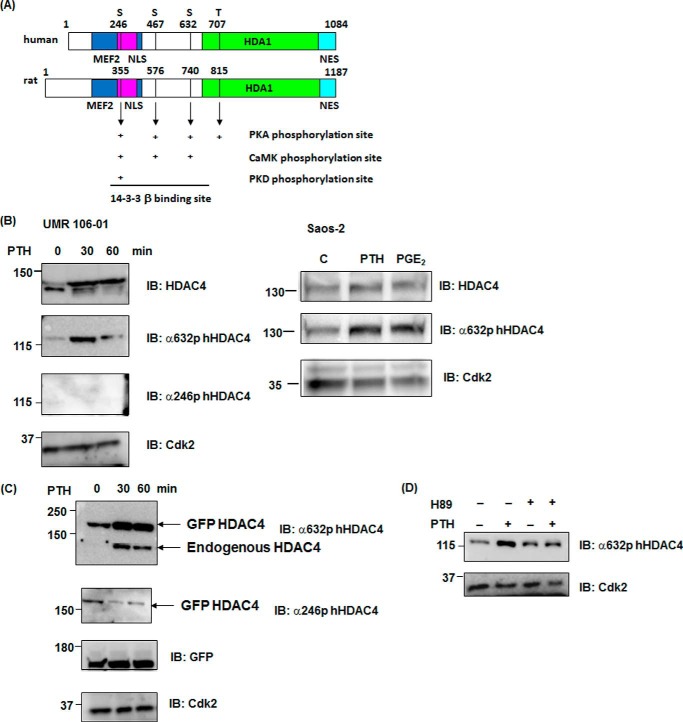FIGURE 2.
PTH causes phosphorylation of a specific site of HDAC4 in the nucleus. A, structure and PKA-dependent phosphorylation sites of human and rat HDAC4 proteins. MEF2 (MEF2C interaction domain): human (118–313), rat (227–422), NLS (nuclear localization signal): human (244–279), rat (353–388), HDA1 (HDA1-related domain): human (655–1084), rat (763–1187), and NES (nuclear export signal): human (1051–1084), rat (1154–1187). B, nuclear extracts from control or PTH-treated (0, 30, 60 min) UMR 106-01 cells were subjected to immunoblotting with anti-phosphoSer632 hHDAC4, anti-phosphoSer246 hHDAC4, and anti-Cdk antibodies. The nuclear extracts from control or PTH (human, 1–34, 10−8 m, 30 min) or prostaglandin E2 (10−6 m, 30 min) treated Saos-2 cells were subjected to immunoblotting with anti-HDAC4, anti-phosphoSer632 hHDAC4, and anti-Cdk antibodies. Anti-Cdk2 was used for the nucleus as a loading control. C, UMR 106-01 cells were transfected with GFP rHDAC4 construct. Cells were stimulated with PTH for 30 and 60 min. The nuclear extracts from control or PTH treated (0, 30, 60 min) UMR 106-01 cells were subjected to immunoblotting with anti-phosphoSer632 hHDAC4, anti-phosphoSer246 hHDAC4, GFP, and anti-Cdk antibodies. Anti-Cdk2 was used for the nucleus as a loading control. D, UMR 106–01 cells were preincubated with protein kinase A inhibitor H89 (50 μm) for 30 min, and then treated with or without PTH (1–34, 10−8 m) for 30 min. Nuclear extracts were subjected to immunoblotting with anti-phosphoSer632 hHDAC4 and anti-Cdk antibodies. Anti-Cdk2 was used as a loading control.

